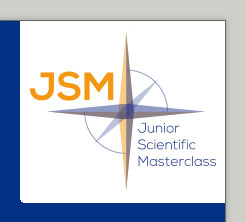Onderzoeksproject aanpassen
Projecten zijn uitsluitend aan te passen door bij het project behorende onderzoekers.
Geef via het uitrolmenu aan welke onderzoeker u bent. Nadat op u de button 'Edit project' heeft geklikt, wordt automatisch een e-mail verstuurd naar het e-mailadres van de onderzoeker die u heeft gespecificeerd.
In deze e-mail staat een link waarmee u het project kunt wijzigen.
Project properties
| Title | Inheritability & genetics in essential tremor |
|---|---|
| Keywords | genetics Essential tremor Family history |
| Researchers |
prof. dr. M.A.J. de Koning-Tijssen Dr. A.M.M. van der Stouwe |
| Nature of the research | The student be joining our research project aimed at essential tremor, and will broaden our research topic by adding investigations of inheritability and genetics in our existing cohort of essential tremor patients. |
| Fields of study | neurology genetics |
| Background / introduction |
|---|
|
Tremor is one of the most common neurological disorders. It is an important topic in the Groningen Movement Disorders Group, as much remains to be unraveled concerning pathophysiology, diagnostic strategies and treatment. Essential tremor is characterized by a bilateral, involuntary, rhythmic shaking (tremor) of the hands, occurring during movement or when the patient tries to maintain a specific position. The main phenotype includes tremor of the hands (in 97% of patients), voice (62%), head (48%), and to a lesser extent the jaw, tongue, legs and feet. The tremor can be very prominent, complicating simple activities of daily life such as drinking a cup of coffee and shaving, as well as compromising professional achievements in technical jobs such as electrician or watchmaker. Imagine a surgeon developing essential tremor: it would mean the end of his career. Another aspect is that some patients feel embarrassed in social situations such as dining in a restaurant, even to the extent that they would rather stay home. Interestingly, half of the patients report a family history. As a consequence, it sometimes happens that one family member visits a neurologist and gets diagnosed, and in a little while the entire family is treated. In most affected families, essential tremor appears to inherit in an autosomal dominant pattern. However, in the search for a causal gene, only one very rare causal mutation and three susceptability loci have been found. One of the proposed reasons for the poor outcome in genetic investigations so far is that the definition of essential tremor has not been applied critically. In other words, different types of tremor have been pooled in previous studies, and as a result no common mutations were found. At the UMCG, we have conducted an imaging study with essential tremor patients, paying a lot of attention to diagnosing our patients correctly. Consequently, we have acquired a number of definite essential tremor patients, which could be used to study inheritability and genetics. |
| Research question / problem definition |
|---|
|
1. What are the inheritance patterns in the essential tremor patients of the Groningen cohort? • How many appear autosomal dominant? • How many patients have a hereditary tremor? How many have a sporadic tremor, appearing without any family history of tremor in the family? 2. If appropriately large affected families are found we will proceed to the second question: what are the genetics involved in these families? |
| Workplan |
|---|
| The student will get in touch with patients that participated in, or applied for participation in our larger essential tremor study, to come up with family trees of the patients. If we find affected families of appropriate size we will proceed to genetic testing. |
| References |
|---|
| Zeuner KE, Deuschl G. An update on tremors. Current opinion in neurology. 2012 Aug;25(4):475-82. |


